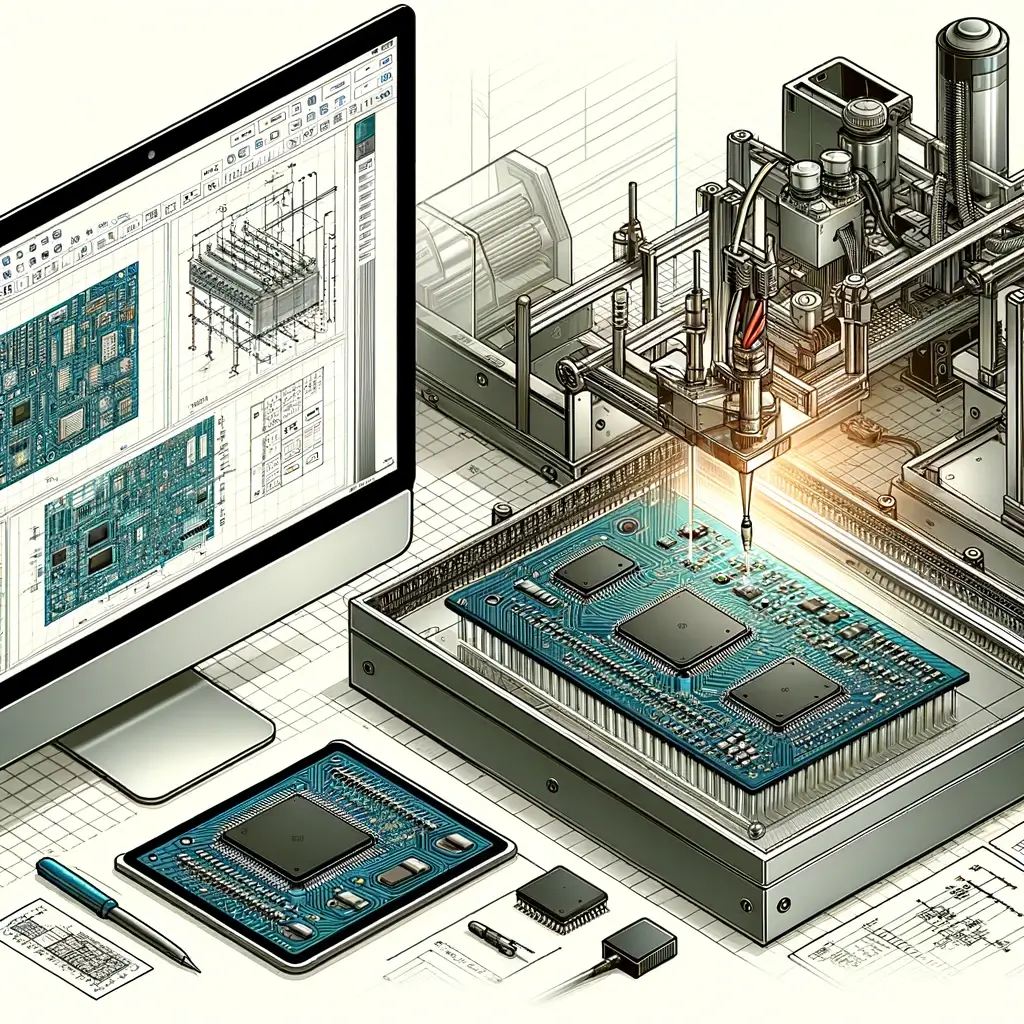Have you ever wondered about the brains behind your electronic devices? What makes them tick, buzz, and light up? The answer often lies in a hidden hero: the Printed Circuit Board (PCB). Specifically, we’re diving into the world of thick PCB boards. Now, don’t let the technical term scare you off! Think of a PCB as the nervous system of your electronic devices, where the “thick” part just refers to its robustness, akin to having a strong backbone. This article is your easy-to-follow guide through this fascinating terrain, crafted especially for the general public like you and me. Let’s unravel the mystery together, shall we?
What is a Thick PCB Board?
Imagine a sandwich. Yes, you heard right—a sandwich. A thick PCB board is much like the hearty, multilayered kind you might pack for a big adventure. It’s a type of PCB that, due to its increased thickness, offers enhanced durability and support for heavy or high-power components. This thickness typically exceeds the standard PCB thickness, making it a go-to for applications requiring extra robustness.
The Anatomy of a Thick PCB
A thick PCB is composed of several layers, including conductive tracks, pads, and other features etched from copper sheets laminated onto a non-conductive substrate. The “thickness” we talk about refers to the overall board, which can range significantly depending on its intended use.
Why Thickness Matters
Thickness in PCBs is not just about brawn; it’s also about brain. The added thickness can enhance the board’s electrical properties, reduce electromagnetic interference (EMI), and provide better heat dissipation. It’s like wearing a thick coat in winter—not only does it protect you from the cold, but it also keeps you comfortable.
Applications of Thick PCBs
From the automotive industry to military equipment, thick PCBs are everywhere. They’re particularly valued in sectors where reliability under stress is non-negotiable, such as in aerospace or medical devices.
Manufacturing Thick PCBs
The process of manufacturing thick PCBs involves careful consideration of material selection, layer management, and fabrication techniques. It’s a sophisticated dance between precision and durability.
Design Considerations
Designing a thick PCB requires a keen eye for detail. Factors like layer count, material type, and thermal management must be balanced to meet the specific needs of the application.
Challenges and Solutions
Working with thick PCBs presents unique challenges, including issues related to heat management and signal integrity. However, with modern techniques and technologies, these hurdles can be effectively overcome.
The Future of Thick PCBs
As technology advances, so does the potential for thick PCB applications. We’re looking at a future where these boards could become even more integral to innovations, particularly in fields like renewable energy and advanced computing.
Choosing the Right PCB for You
Selecting a PCB is like choosing the right tool for the job. It’s essential to consider the demands of your project to determine if a thick PCB is the right fit.
Environmental Considerations
With great power comes great responsibility. The production and disposal of PCBs have environmental impacts that we must address through sustainable practices and recycling.
Innovations in PCB Technology
The world of PCBs is constantly evolving, with innovations that push the boundaries of what’s possible. Thick PCBs are at the forefront of this revolution, offering new opportunities for complexity and capability.
The Role of Thick PCBs in IoT
In the Internet of Things (IoT), thick PCBs play a pivotal role in enabling devices to communicate and operate reliably in diverse environments.
Diving into the world of thick PCB boards might seem daunting at first, but it’s a journey worth taking. With their robustness and versatility, thick PCBs are the unsung heroes behind many of the technologies we rely on daily. By understanding their significance and applications, we can appreciate the complexities and innovations that power our modern world. Whether you’re a tech enthusiast, a professional in the field, or simply curious, the world of thick PCBs has something for everyone.
FAQs
What makes a PCB “thick”? A PCB is considered “thick” when its thickness exceeds the standard range, usually above 1.6 mm, providing enhanced support and durability.
Why would I need a thick PCB? You might need a thick PCB for applications requiring robustness, high power handling, or enhanced thermal management.
Can thick PCBs reduce electronic noise? Yes, the added thickness can help in reducing EMI and electronic noise, thanks to better shielding and ground planes.
Are thick PCBs more expensive? Generally, yes. The increased material use and manufacturing complexities can make thick PCBs more costly than their thinner counterparts.
How do I choose the right thickness for my PCB? The choice depends on your project’s specific needs—consider factors like mechanical strength, thermal management, and electrical requirements.



